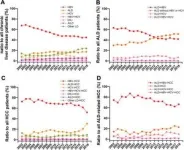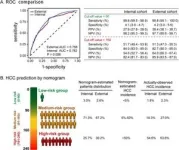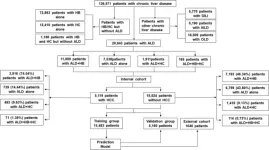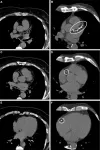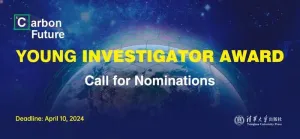(Press-News.org)
Sometimes the solution to a problem can be as simple as changing the way the components are structured
Researchers have proposed a reconfiguration of zinc anodes, a component of renewable energy sources, to help improve the battery and reduce the reliance society has on fossil fuels. The potential that different configurations of a zinc anode can have could reduce costs and side reactions while increasing the safety of the rechargeable zinc metal battery (RZMB) and, of course, improve its “green” rating.
The results were published in Energy Materials and Devices on January 29th.
Rechargeable zinc metal batteries (RZMBs) are promising forms of energy storage devices, both for wearable and traditional storage technologies. The conventional zinc foil anode is not conducive to flexible and wearable technology, which is an ever-present form of tech in many people’s lives. Therefore, altering and adjusting the RZMBs to accommodate the emergence of newer tech as well as improving upon more traditional battery storage is a must.
“With the continuous development of RZMBs, electrode materials need to be diversified to suit practical application scenarios,” said Guozhao Fang, author and researcher of the study.
While zinc anodes are a good solution, they’re still hindered by some of their side reactions. These reactions include the formation of dendrites, or root-like projections of metal that can lead to a battery shortage, corrosion and other issues impeding the function and longevity of the battery. The review researchers put forth on the different configurations of zinc anodes aims to reduce these issues while also offering a lower cost. The configurations proposed in this review include: a 3D Zn anode, a 3D printed Zn anode, a printed Zn anode, imprinted Zn anode and a linear Zn anode.
A 3-dimensional Zn anode can help reduce the formation of Zn dendrites thanks to a larger specific surface for the ions to diffuse. 3D printing these structures can make the process of producing these structures cost-effective without sacrificing precision. The function of the imprinted Zn anode can help reduce the aggregation of zinc ions by utilizing a gradient for conductivity and hydrophilicity (the ability to interact with water or “water-loving”) to reduce ion deposition. Printed and linear anodes can be effective when it comes to flexible and wearable technology, with linear anodes utilizing a zinc fiber-like battery and printed anodes using an engraved electrode pattern on self-adhesive paper. The adhesive is then applied to a substrate which can include wood, skin, paper or glass.
“The design and optimization of new configuration anodes can significantly improve the performance of RZMBs, including increasing energy density, extending cycle life, and improving power density, which promote the commercialization of next-generation RZMBs,” said Fang.
For this to be applicable in a range of technologies and available widely for use, the designs need to be optimized. This would include further research into how the various RZMBs would interface with the electrolyte to ensure safety and chemical stability. The substrates also need to be suitable: ideally, they should have sufficient stability to withstand zinc stripping and electroplating, the ability to maintain their structure, resistance against corrosion and good zinc-attraction (zinciphilicity) for proper and uniform Zn ion deposition.
Furthermore, there’s the possibility new electrolytes would need to be looked into to accompany different zinc anode configurations. By optimizing the electrolyte and the zinc anode, an improvement in the ionic transport rate and therefore overall function of the battery can be achieved.
Yajue Zhang, Mingzhu Li, Shuwuan Liang, and Guozhao Fang from the Department of Materials Science and Engineering at Central South University contributed to this research.
The National Natural Science Foundation of China and the Central South University Innovation-Driven Research Programme made this research possible.
About Energy Materials and Devices
Energy Materials and Devices is launched by Tsinghua University, published quarterly by Tsinghua University Press, aiming at being an international, single-blind peer-reviewed, open-access and interdisciplinary journal in the cutting-edge field of energy materials and devices. It focuses on the innovation research of the whole chain of basic research, technological innovation, achievement transformation and industrialization in the field of energy materials and devices, and publishes original, leading and forward-looking research results, including but not limited to the materials design, synthesis, integration, assembly and characterization of devices for energy storage and conversion etc.
About SciOpen
SciOpen is a professional open access resource for discovery of scientific and technical content published by the Tsinghua University Press and its publishing partners, providing the scholarly publishing community with innovative technology and market-leading capabilities. SciOpen provides end-to-end services across manuscript submission, peer review, content hosting, analytics, and identity management and expert advice to ensure each journal’s development by offering a range of options across all functions as Journal Layout, Production Services, Editorial Services, Marketing and Promotions, Online Functionality, etc. By digitalizing the publishing process, SciOpen widens the reach, deepens the impact, and accelerates the exchange of ideas.
END
A research team has successfully synthesized a metal nanocluster and determined its crystal structure. Their study provides experimental evidence for understanding and designing nanoclusters with specific properties at the atomic level. Metal nanoclusters have wide-ranging applications in the biomedical field.
Their work is published in the journal Polyoxometalates on February 6, 2024.
Scientists have shown interest in ligand-protected atomically precise metal nanoclusters because they have definite atomic structures and exceptional ...
Liver cancer, unfortunately, is the sixth most common cancer and the third most frequent cause of cancer-related death globally. However, its distribution and causes vary greatly across different regions. While areas like Eastern Asia and sub-Saharan Africa see the most cases, the reasons behind them differ significantly.
In high-income countries, liver cancer has been on the decline thanks to widespread newborn hepatitis B vaccination and antiviral drugs. Meanwhile, low-income countries witness a worrying rise, ...
Sprinting “like a jet plane taking off” will help produce Premier League star strikers of tomorrow, new research has revealed.
A University of Essex study of Tottenham Hotspur’s academy has shown that just a few words can instantly boost sprinting speed by 3 per cent over 20 metres.
It would normally take weeks of targeted training to achieve such a large increase.
These short bursts of acceleration are largely seen in goal-scoring situations and could be the difference in beating a defender and finding the net.
Dr Jason Moran, from the School of Sport, Rehabilitation and Exercise Sciences, discovered simple analogies increased ...
OAK BROOK, Ill. – Coronary artery calcium scoring with CT can identify symptomatic patients with a very low risk of heart attacks or strokes, according to a new study published today in Radiology, a journal of the Radiological Society of North America (RSNA). Researchers said the findings may one day help some patients with stable chest pain avoid invasive coronary angiography.
Coronary artery calcium scoring with CT was developed to noninvasively measure the amount of calcium in the arteries of the heart. Higher scores are linked with atherosclerosis, a buildup of plaque in the arteries. A score of 1 to 399, for instance, suggests a moderate amount of plaque, while 400 ...
Haim Sompolinsky, Professor in Residence in Harvard’s Department of Molecular and Cellular Biology and Department of Physics, has received the Brain Prize for his pioneering contributions to computational and theoretical neuroscience.
Considered the world’s most prestigious prize for neuroscience research, the Brain Prize 2024 is shared by Sompolinsky, Larry Abbott of Columbia University, and Terrence Sejnowski of the Salk Institute. All three scientists have helped uncover key principles governing the brain’s structure, ...
Although several studies have linked smoking during pregnancy with neurodevelopmental disorders, the results of behavioral experiments in mice prenatally exposed to nicotine have been inconsistent. In a recent study, scientists from Japan developed a deep learning-based framework to automatically observe and classify mice behavior in such experiments, producing more accurate and unbiased results. They show that prenatal exposure to nicotine could increase the risk of autism spectrum- and attention deficit/hyperactivity disorders in newborns.
The fact that smoking is a risk factor for several diseases, including cancer, stroke, and diabetes, has been known for approximately ...
Which natural products are helping solve biotech challenges? How can enzymes supercharge biodegradation for a greener tomorrow? What role does RNA play in cancer and other diseases? You’ll find the answers to these questions and more at Discover BMB, the annual meeting of the American Society for Biochemistry and Molecular Biology, to be held March 23–26 in San Antonio.
Secure your front-row seat to cutting-edge findings, approaches and technologies in the biological sciences by registering for a complimentary ...
The Network for Education and Research on Peace and Sustainability (NERPS) at Hiroshima University is inviting submissions for Trends in Peace and Sustainability (TRENDS), an innovative academic platform dedicated to exploring the complex interplay between peace and sustainability. TRENDS aims to become a forum for scholars, professionals, and advocates to share their research, insights, and viewpoints on the pursuit of peace amid sustainability challenges. It aims to promote interdisciplinary engagement, stimulating conversation ...
The call for the 2024 Carbon Future Young Investigator Award is open!
About The Award
Tsinghua University Press announces the 2024 Carbon Future Young Investigator Award. This award is intended to recognize and encourage outstanding early career researchers in the areas of carbon-related materials, catalysis, energy conversion and storage, as well as low carbon emission process and engineering. The award includes an honorarium of $1,000 for each awardee (up to 10 awardees).
Eligibility
The nominee must be a current PhD student or postdoctoral researcher.
The nominee’s ...
ST. LOUIS, MO, March 5, 2024 – The Donald Danforth Plant Science Center and the Ethiopian Institute of Agricultural Research (EIAR) have received a $4.9 million grant from The Bill & Melinda Gates Foundation to build on previous advances in gene editing of tef for reduced height and lodging resistance in advanced, farmer preferred tef lines.
The grant will support research to validate the improved semi dwarf tef in Ethiopia under greenhouse and multi location field conditions and generate lodging resistance ...

